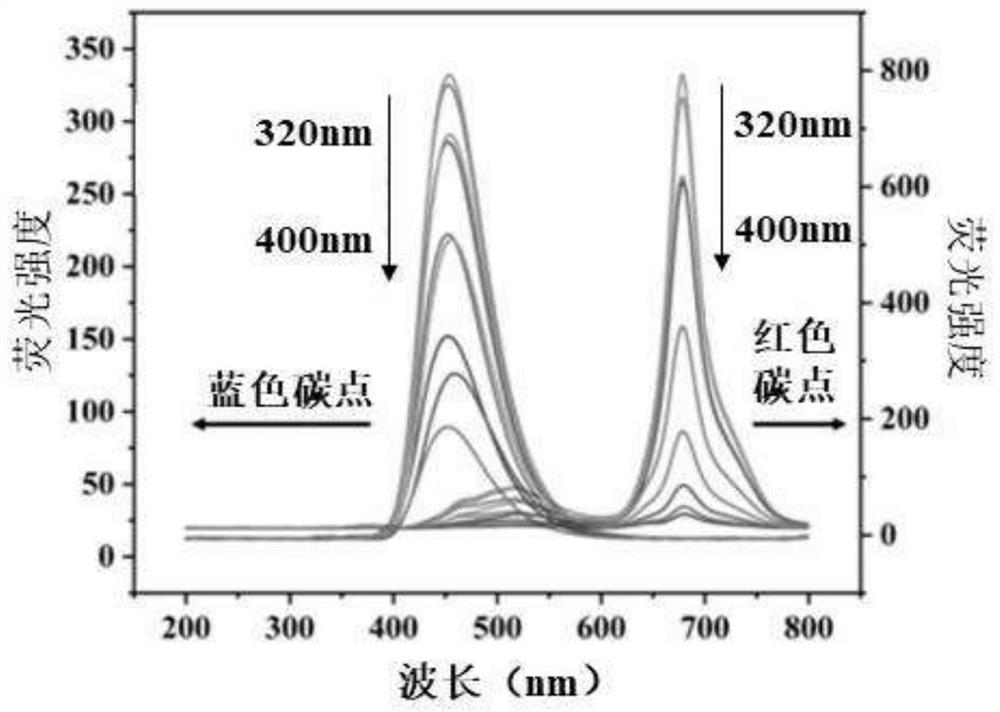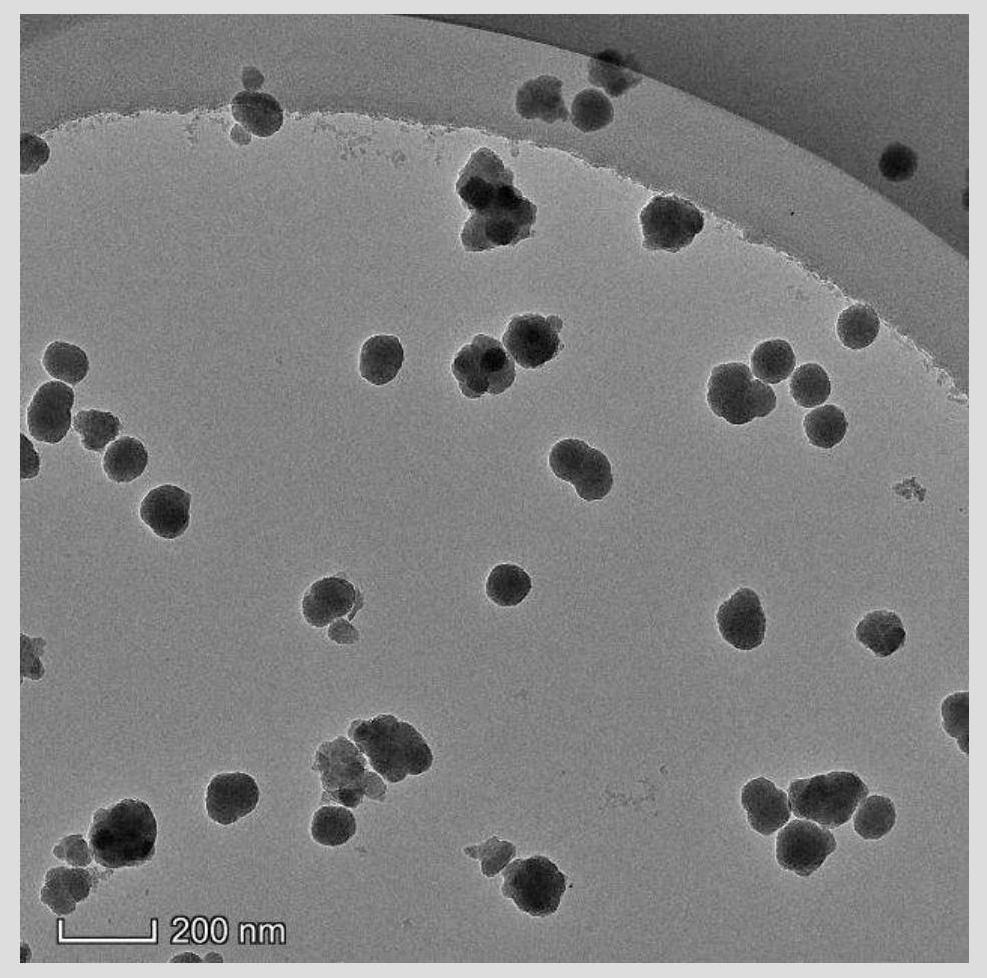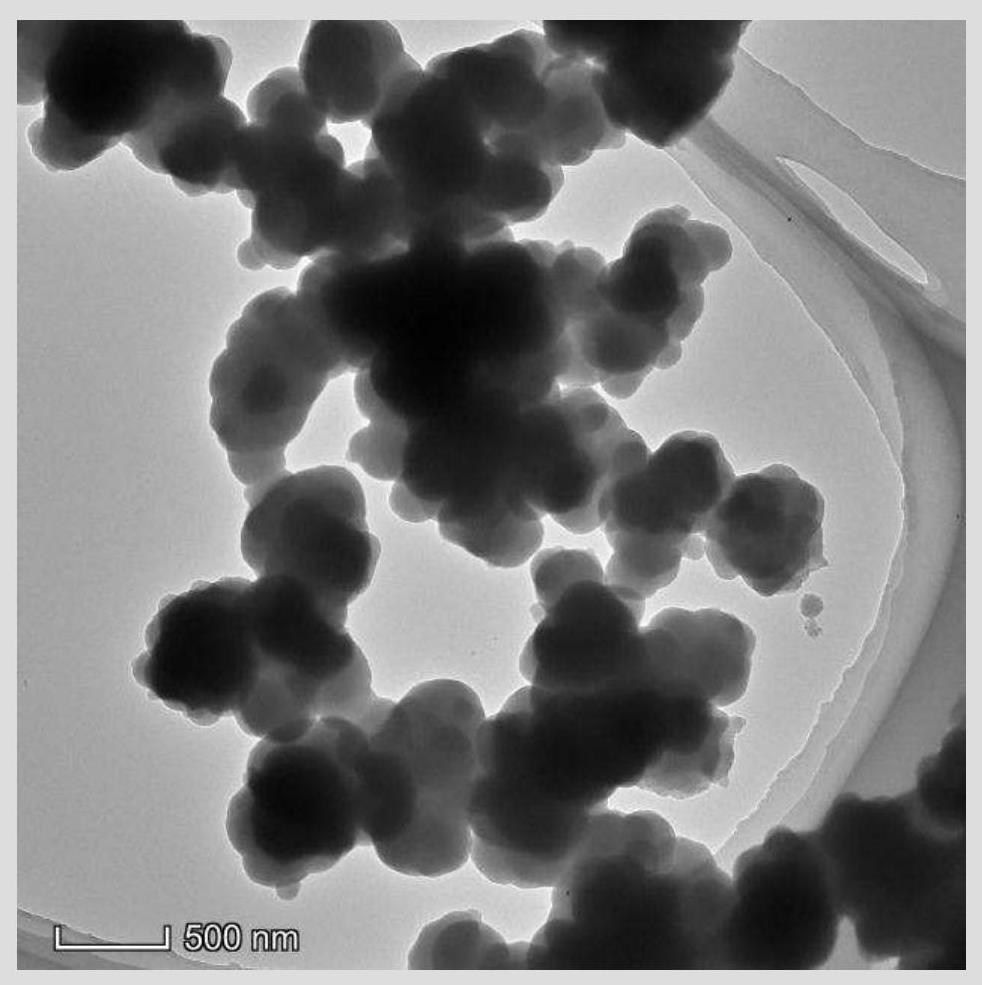Molecularly imprinted ratiometric fluorescent probe based on carbon dots as well as preparation method and application thereof
A ratiometric fluorescent probe and molecular imprinting technology, applied in the field of fluorescence sensing and detection, can solve the problems of cumbersome preparation method, secondary environmental pollution, wide emission spectrum, etc., and achieve the effects of wide source of raw materials, low price and simple synthesis method.
- Summary
- Abstract
- Description
- Claims
- Application Information
AI Technical Summary
Problems solved by technology
Method used
Image
Examples
preparation example Construction
[0049] The invention provides a method for preparing a molecularly imprinted ratiometric fluorescent probe for detecting ciguatera toxin in coral reef fish. The method includes: coating the red carbon dots with a silicon dioxide layer to obtain RCDs@SiO 2 ; then in RCDs@SiO 2 On the surface, monensin is used as a fragment-virtual template molecule, 3-aminopropyltriethoxysilane is used as a functional monomer, and ethyl orthosilicate is used as a cross-linking agent to polymerize the upper molecular imprinting layer, and the blue carbon dots are embedded in the In the molecularly imprinted layer, a spherical material that forms a core-shell structure.
[0050] The molecularly imprinted ratiometric fluorescent probe MIPs@BCDs / RCDs@SiO 2 The preparation method mainly comprises the following steps:
[0051] Step 1: preparation of blue carbon dots (BCDs);
[0052] Step 2: preparation of red carbon dots (RCDs);
[0053] Step 3: Prepare RCDs@SiO by coating RCDs with a silicon di...
Embodiment 1
[0063] Example 1 Molecular imprinting ratiometric fluorescent probe MIPs@BCDs / RCDs@SiO 2 preparation of
[0064] refer to Figure 1 to Figure 6 , the present invention provides a molecularly imprinted ratio fluorescent probe for detecting ciguatera toxin in coral reef fish, said molecularly imprinted ratio fluorescent probe is composed of blue carbon dots, red carbon dots, monensin, 3-ammonia A core-shell structure polymer obtained by the polymerization of propyltriethoxysilane and tetraethylorthosilicate, and the red carbon dots are coated with a silica layer to obtain RCDs@SiO 2 , the synthetic imprinting layers of monensin, 3-aminopropyltriethoxysilane and tetraethyl orthosilicate were grafted on RCDs@SiO 2 The outer layer, the blue carbon dots are embedded in the imprinted layer, and the fragment imprinted ratio fluorescent probe MIPs@BCDs / RCDs@SiO is obtained after monensin is eluted 2 .
[0065] The red carbon dots are located in the inner core as a fluorescent refer...
Embodiment 2
[0079] Example 2 Molecular Imprinting Ratio Fluorescent Probes MIPs@BCDs / RCDs@SiO 2 selectivity
[0080] In order to study the specific adsorption of the molecularly imprinted ratiometric fluorescent probe prepared in Example 1, the present invention further compared and analyzed MIPs@BCDs / RCDs@SiO 2 and non-imprinted ratiometric fluorescent probes NIPs@BCDs / RCDs@SiO 2 Adsorption properties for 6 structural analogues. The specific method is: take 300μL of 0.1mg / mL MIPs@BCDs / RCDs@SiO 2 and NIPs@BCDs / RCDs@SiO 2 solution, add 100 μL 0.1ng / mL monensin, P-CTX-3C, nigericin, rotenone, ionomycin A and lysosin into the solution respectively, put them in a constant temperature oscillator to fix and oscillate, set The oscillation time of the constant temperature oscillator is 10min, the oscillation speed is 200rpm, and the temperature is 25℃, comparing MIPs@BCDs / RCDs@SiO 2 and NIPs@BCDs / RCDs@SiO 2 Adsorption properties for different molecules. Using the degree of fluorescence que...
PUM
| Property | Measurement | Unit |
|---|---|---|
| Particle size | aaaaa | aaaaa |
Abstract
Description
Claims
Application Information
 Login to View More
Login to View More - R&D
- Intellectual Property
- Life Sciences
- Materials
- Tech Scout
- Unparalleled Data Quality
- Higher Quality Content
- 60% Fewer Hallucinations
Browse by: Latest US Patents, China's latest patents, Technical Efficacy Thesaurus, Application Domain, Technology Topic, Popular Technical Reports.
© 2025 PatSnap. All rights reserved.Legal|Privacy policy|Modern Slavery Act Transparency Statement|Sitemap|About US| Contact US: help@patsnap.com



